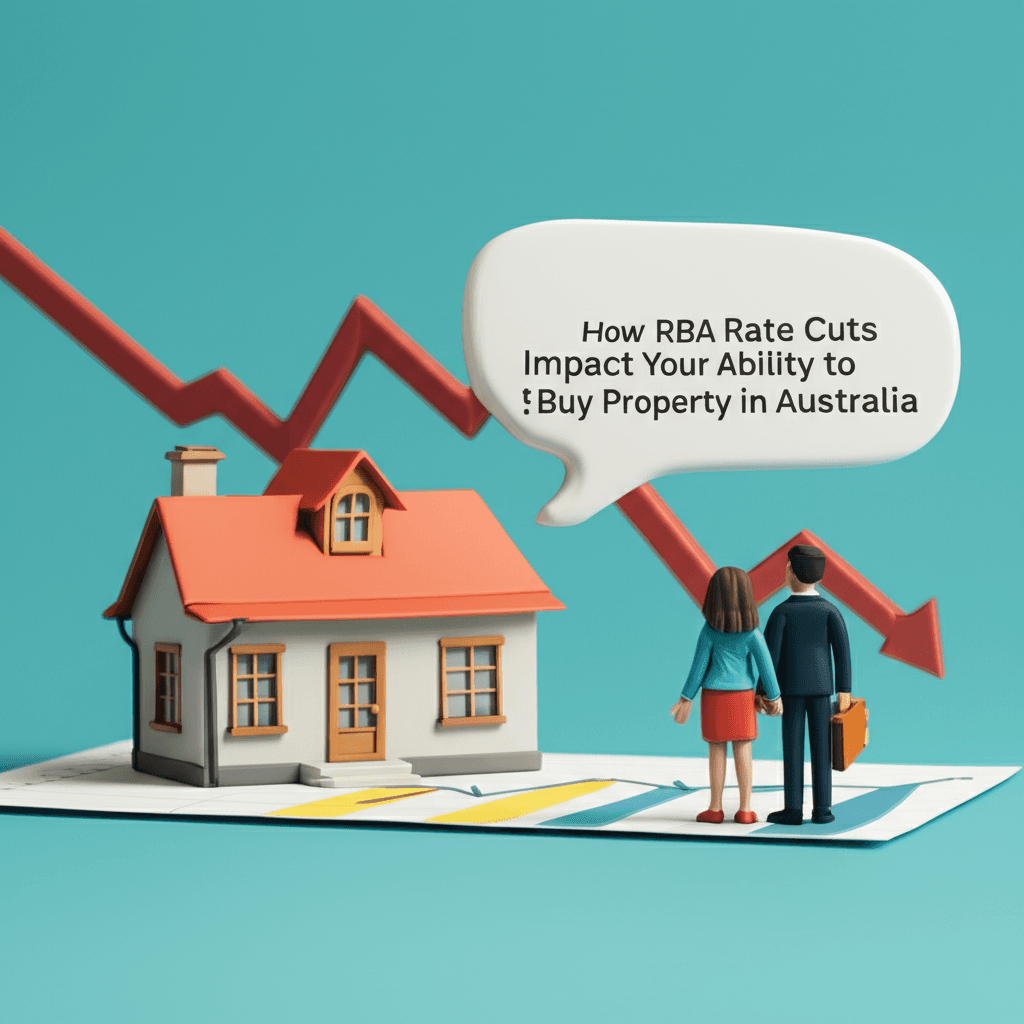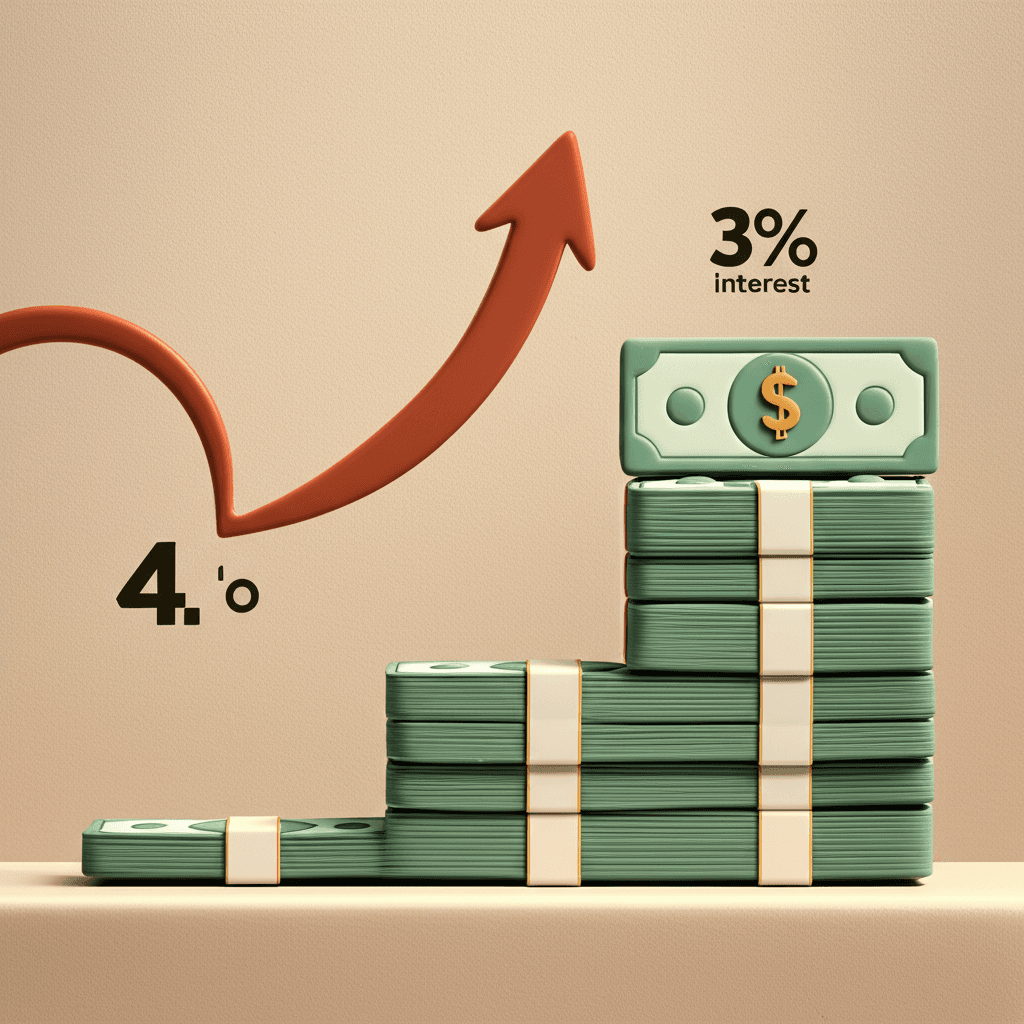How RBA Rate Cuts Impact Your Ability to Buy Property in Australia
An expert analysis of how lower interest rates affect borrowing power, market sentiment, and the real cost of entering the property market.

Introduction
With the Reserve Bank of Australia (RBA) signalling a shift towards lower cash rates, headlines are buzzing with optimism for aspiring homeowners. The common belief is that rate cuts make it easier to get into the property market. However, the reality is far more complex. While lower rates can provide relief for existing mortgage holders, their impact on new buyers is often counterintuitive, potentially making the dream of homeownership even more challenging.
The Mechanics: How Rate Cuts Boost Borrowing Power
The most immediate effect of a cash rate cut is an increase in a buyer's serviceability—their ability to repay a loan as assessed by lenders. A seemingly small 0.25% cut can increase borrowing capacity by 3-5%. For a buyer previously capped at a $1 million loan, this could add an extra $50,000 to their budget.
If multiple rate cuts occur, as some economists predict, the impact is compounded. A full 1% reduction could boost serviceability by as much as 15-20%. That same buyer with a $1 million limit could suddenly find themselves approved for up to $1.2 million. This significant jump in borrowing power is a key driver of market activity. Understanding these financial shifts is crucial, which is why tools that provide in-depth market analysis are so valuable for serious buyers. Explore how data can empower your decisions on the HouseSeeker Real Estate Analytics Hub.

Sentiment: The Market's Real Driving Force
Often, the conversation and anticipation surrounding rate cuts have a more significant impact on the market than the cut itself. The media commentary leading up to an RBA decision builds momentum and confidence. We saw this recently in Perth, where the week following a 0.25% drop saw the highest number of property sales since 2023. This spike wasn’t just a reaction to slightly cheaper money; it was fuelled by months of positive sentiment, confirming what the market already believed was going to happen. This confidence encourages more buyers to enter the market, intensifying competition for a limited supply of properties.
A Tale of Two Markets: National Trends vs. Local Realities
It's important to recognise that Australia is not a single, uniform property market. While Perth has enjoyed a prosperous run, buyers on the East Coast face a different reality. Many who bought at the peak of the Sydney and Melbourne markets in 2021-2022, when money was cheap, are now under significant financial pressure. Their property values may have decreased by 10-30% while their mortgage repayments have soared. For them, a rate cut is about financial relief. For buyers in a booming market like Perth, it’s fuel for further price growth. This regional variance underscores the need for localised, data-driven insights, a core feature of the HouseSeeker AI Property Search.

The Paradox: Do Rate Cuts Actually Help First Home Buyers?
The central issue is that any gains in borrowing capacity are quickly absorbed by rising property prices. When every potential buyer in the market can suddenly borrow 15-20% more, they don't buy bigger houses—they simply bid higher for the same properties. This increased competition puts upward pressure on prices, effectively nullifying the benefit of the rate cut for new entrants. The extra $50,000 in borrowing power is immediately matched by a $50,000 increase in the sale price. In this scenario, the rate cut doesn't help people get into the market; it just raises the barrier to entry.
Beyond Interest Rates: More Effective Solutions
If rate cuts aren't the silver bullet, what is? Experts point to other regulatory levers that could provide more targeted support. One major point of discussion is APRA's 3% serviceability buffer, which requires banks to assess borrowers at a rate significantly higher than the actual interest rate. Reducing this buffer, even to 2%, could provide a substantial and more direct boost to borrowing capacity without necessarily fuelling the same level of market-wide price inflation.
Other potential solutions include meaningful stamp duty reforms and enhancing government-backed first home buyer deposit schemes. These measures target the primary hurdles for new buyers—the upfront deposit and transaction costs—rather than simply adding more debt into the system.
Conclusion
In isolation, RBA cash rate decreases are unlikely to help new buyers enter the property market. While they offer relief to existing homeowners and stimulate market activity, the resulting surge in buyer demand and sentiment ultimately leads to higher property prices. This makes the market more unattainable for those on the outside looking in. True support for aspiring homeowners will likely come from more nuanced policy changes like serviceability buffer adjustments and tax reforms.
Navigating these complex dynamics requires more than just headlines; it requires a deep understanding of market data. To make informed decisions tailored to your unique situation, it's essential to use powerful analytical tools.
Ready to cut through the noise and find your ideal property with data-driven confidence? Explore HouseSeeker's Real Estate Analytics Hub to understand the real trends shaping your property search.
Frequently Asked Questions
What is a serviceability buffer?
A serviceability buffer is a safety margin mandated by the Australian Prudential Regulation Authority (APRA). Lenders must assess a borrower's ability to repay their loan at an interest rate that is at least 3% higher than the actual loan product rate. This ensures borrowers can still afford their mortgage if interest rates rise.
How much does a 0.25% rate cut really increase my borrowing power?
A 0.25% rate cut typically increases your borrowing capacity by about 3% to 5%. For example, if you were approved for a $700,000 loan, a rate cut could potentially increase your borrowing limit to between $721,000 and $735,000, depending on your individual financial circumstances.
Do lower interest rates always lead to higher property prices?
While there is a strong correlation, it's not guaranteed. Lower rates increase borrowing capacity and often boost buyer sentiment, which typically leads to increased demand and higher prices. However, other factors like economic conditions, unemployment rates, housing supply, and government policy also play a significant role in determining property price movements.
